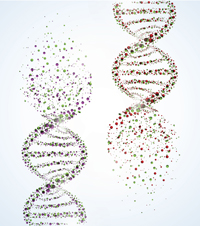Genomics
With the advent of Next Generation Sequencing techniques accessing microbial genome sequence is cheap and fast. This newly available resource reshaped our overall experimental approaches. One can think about are four reasons to (re)sequence the genomes of other S. cerevisiae strains. First, the considerable sequence divergence among S. cerevisiae species may cause practical complications, for example, the design cassettes for gene disruption or design of CRISPR gRNA in non-S288C strains. The increasing discovery of polymorphisms in sequenced S. cerevisiae strains illustrates that this is not a trivial problem. Secondly, although the genomes of S. cerevisiae strains appears to be much more strongly conserved than those of other organisms, such as lactic cid bacteria, S. cerevisiae strains do show physiologically relevant differences in their gene complement. For example, the absence of a functional MALx3 gene in S. cerevisiae S288C leads to a maltose-negative phenotype, while an atypical ENA gene complement renders the laboratory strain CEN.PK113-7D more sensitive to lithium ions. The possible importance of strain-specific genes is illustrated by the identification of a probable horizontal gene transfer event in the S. cerevisiae wine strain EC1118, that led to the acquisition of genes from the spoilage yeast Torulaspora ellipsoides. Third, in addition to the presence or absence of coding regions, differences can occur in non-coding regions, such as promoter regions. Knowledge of such differences is essential for the analysis and modelling of regulatory networks in systems biology. Finally, laboratory evolution is rapidly gaining popularity as a tool to analyse genome function and to select for yeast strains with industrially relevant properties. Genome comparisons based on mapping short-read data to a distant relative may overlook structural changes. Hence availability of a well-annotated, high-quality reference genome is essential to interpret the changes that occur during laboratory evolution.
In collaboration with the Delft Bioinformatics group from the faculty of Electrical Engineering, Mathematics and Computer Science (http://bioinformatics.tudelft.nl/ ), we have elaborated an efficient and robust analytical pipeline for fast identification of mutations (Single Nucleotide Variation, Insertion –DELetion, Copy Number Variation) that can rapidly be reverse engineered in naive genetic background. These contributions further strengthened the place of the Industrial Microbiology section as a whole in the top research groups in the field of yeast metabolic engineering worldwide.
